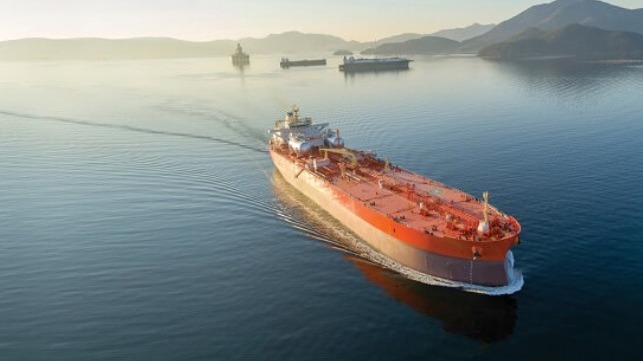World’s First Ammonia-Powered VLCC on Track for 2025 Launch

Just two years after announcing plans for a joint development project to explore ammonia-fueled tankers, three of the partners in the project announced they are proceeding with the design and construction of two VLCC likely to become the first large ammonia-fueled vessels in service. Lloyd's Register, Samsung Heavy Industries, and Malaysian shipping company MISC through its Singapore-based tanker company AET signed the memorandum of understanding calling for the dual-fuel ammonia VLCCS to enter service in late 2025 and early 2026.
Designs for the vessels are coming from a project the companies announced in January 2020 along with MAN Energy Solutions to collaborate on exploring ammonia as a marine fuel. At the time, the partners said they recognized that the shipping industry would need to explore multiple decarbonization pathways and hoped their collaboration would spur others in the maritime industry to join forces on addressing the global challenge. Expanded in 2021 to include additional participants they named the collaboration The Castor Initiative.
“The Castor Initiative members have already made impressive progress in making deep-sea zero-carbon vessels in the last few years,” said J. T. Jung, President and CEO of Samsung Heavy Industries. “We believe this new development of zero-carbon VLCCs will be accelerating the progress of The Castor Initiative and greatly help bring sooner energy transition in the shipping industry.”
Samsung reported progress with the design concepts and in September 2020 received the first basic certification from Lloyd's Register for the designs. They reported they had developed concepts for an Aframax tanker between 80,000 and 120,000. After receiving the Approval in Principle, they said would proceed to commercialization targeting 2024.
“The signing of today’s MOU is the beginning of many more forward moves that will come from The Castor Initiative, to accomplish our GHG ambitions jointly, ahead of 2050. The efforts of our collaboration have brought us to this historic moment where we will soon see the delivery of the world’s first two zero-emission VLCCs, which will be owned and operated by AET. Getting these vessels on the water is not the only focus, there is the long game of ensuring the reskilling of talent and the availability of bunkering facilities which are key to the sustainable operations of these two new vessels,” said MISC President and Group CEO, Datuk Yee Yang Chien.
While proceeding with the design process, the companies also said they would expand the project to focus on identifying green shipping corridors to facilitate the bunkering of these vessels. The Castor Initiative members will also be looking into the establishment of an approved training syllabus for seafarers in at least two maritime training institutions. They noted that it is crucial to ensure that the latest training and education is provided to the crew to enable the smooth operations of the zero-emission VLCCs.
